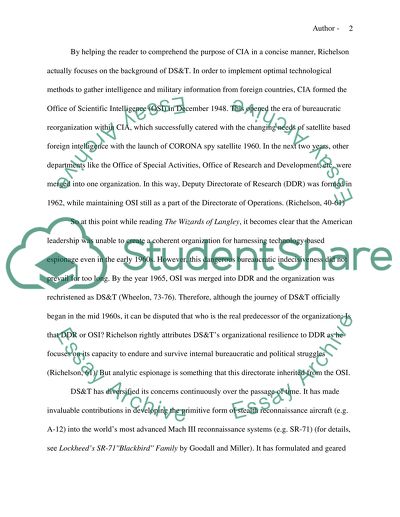Cite this document
(Richelsons The Wizards of Langley Book Report/Review, n.d.)
Richelsons The Wizards of Langley Book Report/Review. Retrieved from https://studentshare.org/literature/1627912-review-richelsons-the-wizards-of-langley-inside-the-cias-directorate-of-science-and-technology
Richelsons The Wizards of Langley Book Report/Review. Retrieved from https://studentshare.org/literature/1627912-review-richelsons-the-wizards-of-langley-inside-the-cias-directorate-of-science-and-technology
(Richelsons The Wizards of Langley Book Report/Review)
Richelsons The Wizards of Langley Book Report/Review. https://studentshare.org/literature/1627912-review-richelsons-the-wizards-of-langley-inside-the-cias-directorate-of-science-and-technology.
Richelsons The Wizards of Langley Book Report/Review. https://studentshare.org/literature/1627912-review-richelsons-the-wizards-of-langley-inside-the-cias-directorate-of-science-and-technology.
“Richelsons The Wizards of Langley Book Report/Review”, n.d. https://studentshare.org/literature/1627912-review-richelsons-the-wizards-of-langley-inside-the-cias-directorate-of-science-and-technology.


